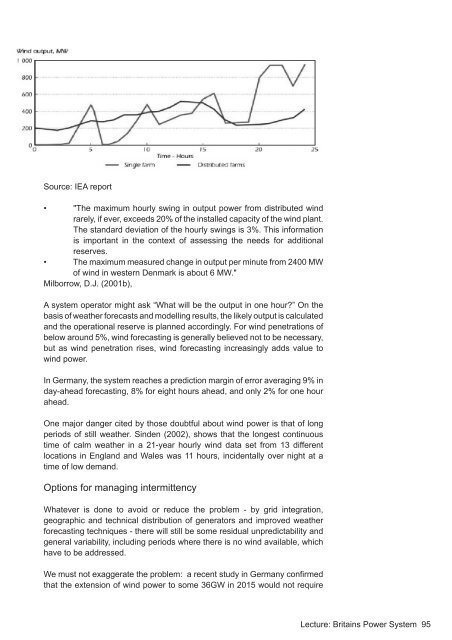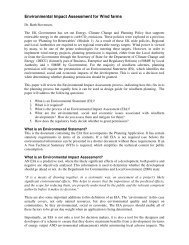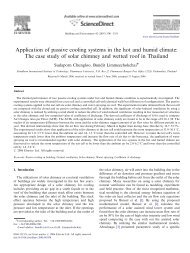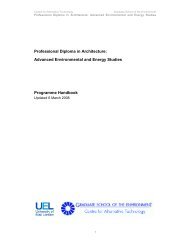Module B1 Study Book - the Graduate School of the Environment
Module B1 Study Book - the Graduate School of the Environment
Module B1 Study Book - the Graduate School of the Environment
You also want an ePaper? Increase the reach of your titles
YUMPU automatically turns print PDFs into web optimized ePapers that Google loves.
Source: IEA report<br />
• "The maximum hourly swing in output power from distributed wind<br />
rarely, if ever, exceeds 20% <strong>of</strong> <strong>the</strong> installed capacity <strong>of</strong> <strong>the</strong> wind plant.<br />
The standard deviation <strong>of</strong> <strong>the</strong> hourly swings is 3%. This information<br />
is important in <strong>the</strong> context <strong>of</strong> assessing <strong>the</strong> needs for additional<br />
reserves.<br />
• The maximum measured change in output per minute from 2400 MW<br />
<strong>of</strong> wind in western Denmark is about 6 MW."<br />
Milborrow, D.J. (2001b),<br />
A system operator might ask “What will be <strong>the</strong> output in one hour?” On <strong>the</strong><br />
basis <strong>of</strong> wea<strong>the</strong>r forecasts and modelling results, <strong>the</strong> likely output is calculated<br />
and <strong>the</strong> operational reserve is planned accordingly. For wind penetrations <strong>of</strong><br />
below around 5%, wind forecasting is generally believed not to be necessary,<br />
but as wind penetration rises, wind forecasting increasingly adds value to<br />
wind power.<br />
In Germany, <strong>the</strong> system reaches a prediction margin <strong>of</strong> error averaging 9% in<br />
day-ahead forecasting, 8% for eight hours ahead, and only 2% for one hour<br />
ahead.<br />
One major danger cited by those doubtful about wind power is that <strong>of</strong> long<br />
periods <strong>of</strong> still wea<strong>the</strong>r. Sinden (2002), shows that <strong>the</strong> longest continuous<br />
time <strong>of</strong> calm wea<strong>the</strong>r in a 21-year hourly wind data set from 13 different<br />
locations in England and Wales was 11 hours, incidentally over night at a<br />
time <strong>of</strong> low demand.<br />
Options for managing intermittency<br />
Whatever is done to avoid or reduce <strong>the</strong> problem - by grid integration,<br />
geographic and technical distribution <strong>of</strong> generators and improved wea<strong>the</strong>r<br />
forecasting techniques - <strong>the</strong>re will still be some residual unpredictability and<br />
general variability, including periods where <strong>the</strong>re is no wind available, which<br />
have to be addressed.<br />
We must not exaggerate <strong>the</strong> problem: a recent study in Germany confirmed<br />
that <strong>the</strong> extension <strong>of</strong> wind power to some 36GW in 2015 would not require<br />
Lecture: Britains Power System 95











